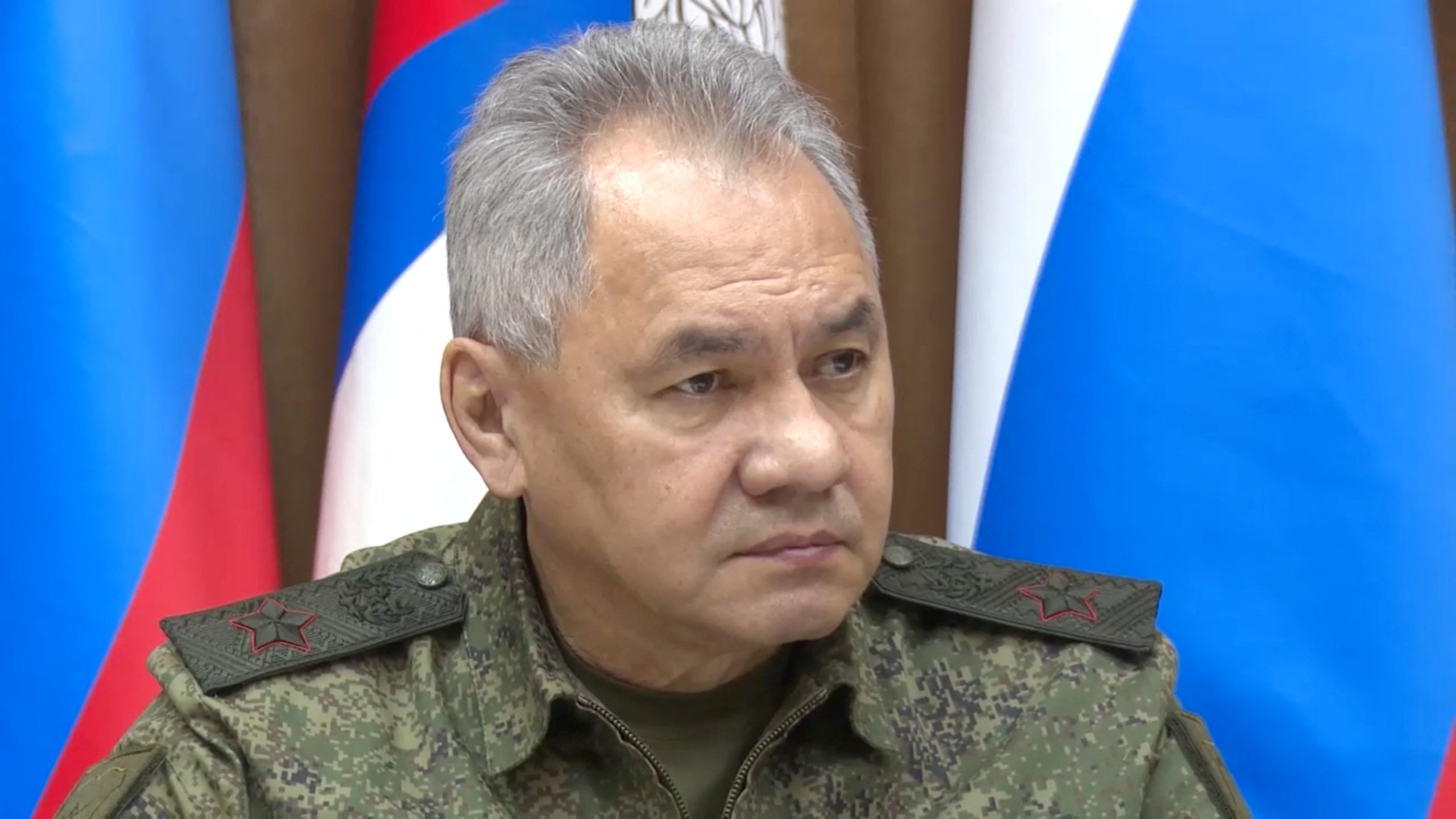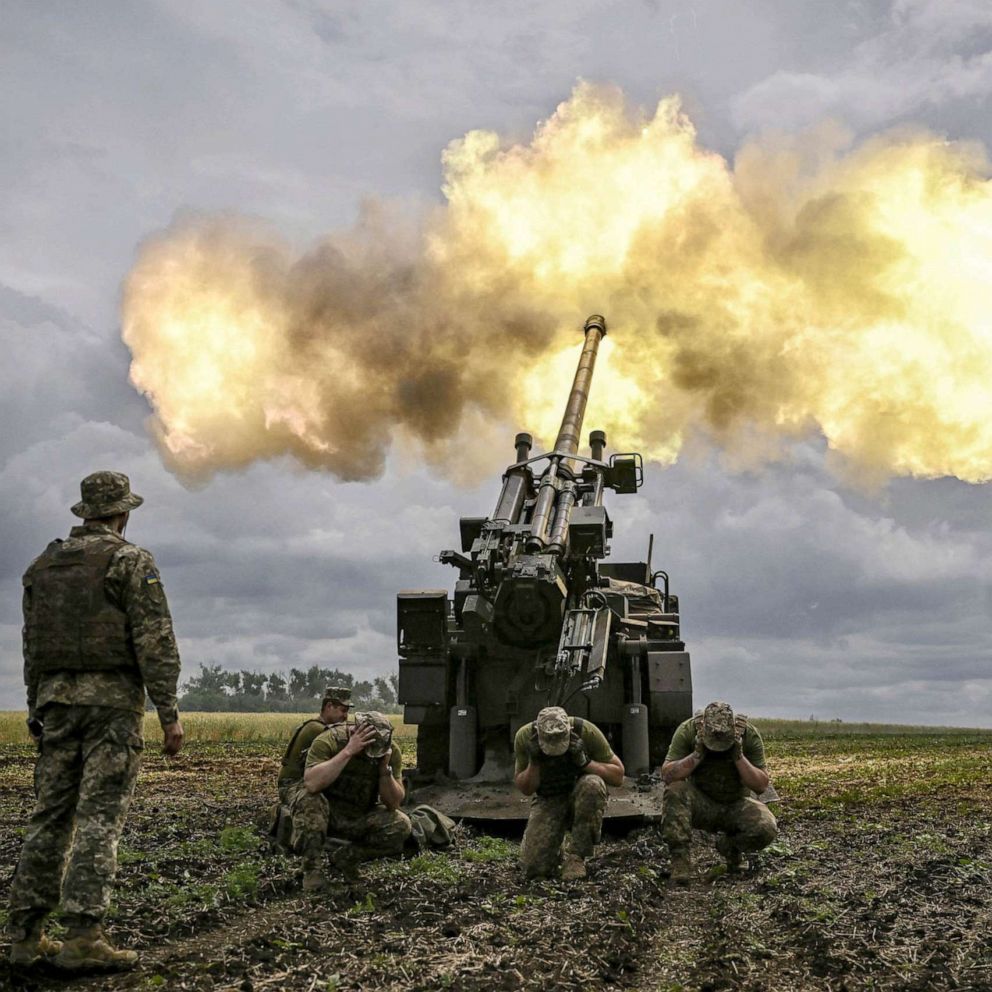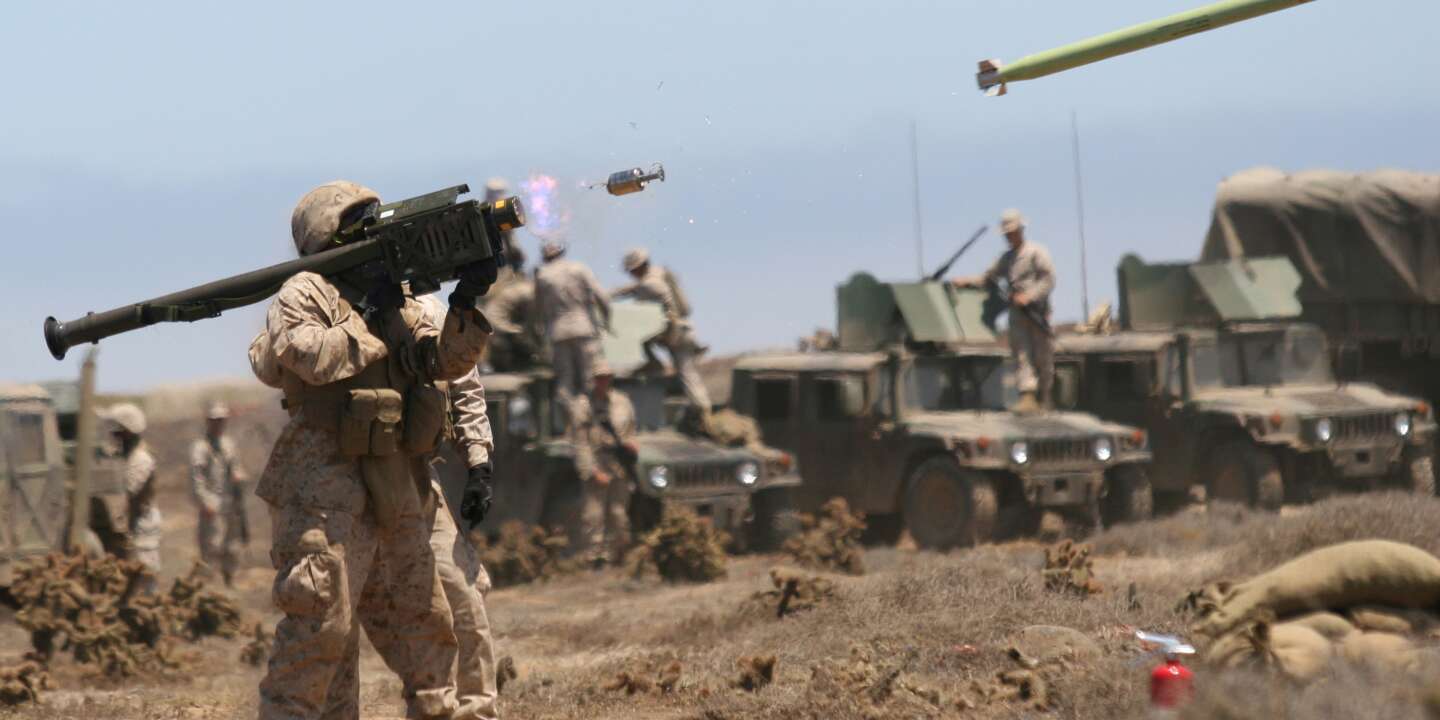Russia Ukraine Weapons - Western weapons will not matter to Ukraine, and American military equipment will realistically not help Ukrainians or intimidate Putin.
Samuel Sarab, senior political scientist at RAND Corporation and Scott Baston, senior security analyst at RAND Corp.
Russia Ukraine Weapons

Ukrainian soldiers engage in armed clashes with Russian-backed separatists in Donetsk Oblast during a ceremony of handing over heavy weapons and military equipment in Kiev on November 15, 2018.
Why Ukraine Will Win
Ukrainian soldiers engage in armed clashes with Russian-backed separatists in Donetsk Oblast during a heavy weapons and military equipment handover ceremony in Kiev, Nov. 15, 2018. Sergei Chubinsky/AFP via Getty Images
With Russian forces massed along Ukraine's borders, the political debate in Washington is focused on what the US can do to help its Ukrainian partners protect their country. Just this week, the Biden administration approved the shipment of US shoulder-launched Stinger anti-aircraft missiles to Kiev, in addition to other military equipment. Allies, including Great Britain, also provide their own assistance.
The justification for the aid is different. Some argued that US military aid to Ukraine could now change the face of Russia, deterring Moscow from attacking. Others argue that aid to the Ukrainian military could have a real impact on a potential conflict with the Russians, making the Kremlin's victory more meaningful and difficult, and excluding some military options that Russia might consider. There are also calls for more cost-cutting opportunities for Moscow - meaning killing more Russian soldiers - to create political problems for President Vladimir Putin at home, although Ukraine is not widely expected to win.
Neither of these arguments is convincing. This does not mean that security cooperation with Kiev should end. This means that military aid is not an effective lever to resolve this crisis.
A Rush To Failure': How The Russian Military Started Off So Badly In Ukraine
Since 2014, following Russia's annexation of Crimea and invasion of the Donbass, the United States has provided Ukraine with $2.5 billion in military aid. U.S. assistance to Ukraine has included training, selective defense systems (such as anti-mortar radars), and most recently, Javelin anti-tank missiles. The aid is aimed at improving Ukraine's effectiveness in a relatively stable conflict against the Russian-backed separatist forces in the Donbas, armed mainly with small arms and light weapons and some Soviet-era artillery and armor.
Most importantly, Ukraine is not fighting the Russian armed forces in Donbas. Yes, Russia armed, trained and commanded separatist forces. But even by Kiev's own estimates, most of the rebel forces are made up of locals, not soldiers from the regular Russian army. In fact, the Russian armed forces were directly involved in combat only twice – in August-September 2014 and in January-February 2015.
Moscow has tried to maintain the veil of denial about its involvement in the conflict, which means that the Russian military used no small part of its capabilities against the Ukrainians. It used enough power to get the job done while avoiding prolonged overt interventions. While this has been repeatedly demonstrated in combat operations in Syria, a number of distinctive Russian capabilities - including air force and ballistic and cruise missiles - have not been engaged in combat.

The nature of Russia's reported preparations for a protracted war, should it occur, would be fundamentally different from the stalemate situation of the last seven years. Russia has the capability to conduct a large-scale joint strike operation involving tens of thousands of personnel, thousands of armored vehicles and hundreds of fighter aircraft. It will begin with devastating air and missile strikes by ground, air and sea forces striking deep into Ukraine and hitting headquarters, airports and logistics points. Ukrainian forces would start a near encirclement conflict from the start, with Russian forces along the eastern border, naval and amphibious forces threatening from the Black Sea to the south, and the possibility (increasingly real) of additional Russian forces stationed in Belarus and threats from the north, where the border is less than 65 miles from Kiev.
Iran Denies Supplying Russia With Weapons For Use In Ukraine
In short, this war will not resemble the previous state of conflict in Ukraine and undermines the first rationale for US aid: deterring Russia. The Ukrainian army is designed to fight the conflict in the Donbass and thus poses little deterrent threat to Russia; US arms shipments will not change that. If Moscow is ready to launch a major war, to invade Europe's second largest country of more than 40 million people, while taking massive economic penalties from the West, no amount of US military aid is likely to stop it. Delivered in the coming weeks. The only weapons systems that could credibly impose costs that could change Russia's bills, such as surface-to-air missiles and fighter jets, are unlikely to be supplied by the United States to the Ukrainians. And regardless, not to mention Ukrainian operators trained to use them to influence this crisis. Large, modern systems require extensive training and material support.
When deterrence fails and war begins, the Ukrainian armed forces find themselves in a desperate situation almost immediately. Ukraine lacks sufficient forces to credibly defend itself against any potential attack, meaning it must choose between defending a chosen set of fixed strongpoints - giving up control of other areas - or maneuvering to attack superior Russian forces. they. The line of conflict in the Donbass is multi-pronged. Ukrainian fortifications may look like a modern Maginot Line: ready for a frontal attack.
Ukraine's large size means that ground forces operating there must move to cover large areas of the countryside. Mobile clashes would benefit Russian forces, which are much better trained and equipped for combined air and ground maneuver warfare than the Ukrainian opposition. The Russian military has repeatedly practiced the use of long-range strikes and accurate tactical shooting from drones and other means of reconnaissance in training and combat operations in Syria. Russian fighter jets and strategic air defenses give Moscow plenty of opportunities to control the air and attack Ukrainian forces, and most Russian pilots have recent real-world experience in Syria. The Ukrainian military mainly uses traditional Soviet weapons; Russian forces are well acquainted with the limitations of these systems and know what tactics to use to further reduce their effectiveness.
In short, the military balance between Russia and Ukraine is so tilted in Moscow's favor that any help Washington may provide in the coming weeks will be largely irrelevant to the resolution of the conflict. Russia's superiority in terms of capabilities, capabilities and geographic location poses an insurmountable challenge to the Ukrainian forces defending their country. The second argument with - changing the course of the war - does not hold together.
What Heavy Weapons The West Has (and Hasn't) Sent Ukraine
The third argument for aid is helping to enable the Ukrainian insurgency to impose costs on the Russian occupation forces. Many have in mind the historical analogy of American aid to the mujahideen in Afghanistan after the Soviet invasion in 1979. In fact, some advocated providing the same shoulder-launched Stinger anti-aircraft missiles that were plaguing the Soviet Air Force at the time.
These forms of support, by the way, will complicate Moscow's situation if Russia undertakes a long-term occupation of areas inhabited by many hostile Ukrainians. But US support for the Ukrainian uprising should be a last resort in a protracted conflict, not a pre-war policy goal. Moscow is unlikely to make a difference if the prospect of slightly more costly aggression gets to this point; It will incur very significant costs. Russian planners know that in a large-scale operation, especially an invasion, a lot can go wrong. If Putin makes the decision to seize much of Ukraine, it's not because he thinks it will be easy or cheap for Russia.
We must also remember that the costs of a war lasting as long as the insurgent campaign in Ukraine lasts will be disproportionately borne by Ukrainians. At this point in the conflict, thousands, if not tens of thousands, of Ukrainians would die. Any victory they gain over the Russian occupiers will cost the Ukrainian rebels dearly; The experience of the Syrian opposition or the Chechen rebels should not make the Americans want a close partner like Ukraine.

In normal times, there are many good reasons why the US would provide military support to Ukraine. But they are not
Answering Four Hard Questions About Russia's War In Ukraine
Aggressor squadron, 18th aggressor squadron, 527th aggressor squadron, bahamas aggressor, f 5 aggressor squadron, 65th airlift squadron, 57th information aggressor squadron, 65th fighter squadron, 26th space aggressor squadron, 64th aggressor squadron, space aggressor squadron, navy aggressor squadron
0 Comments